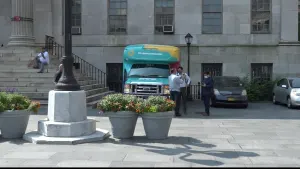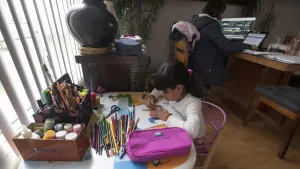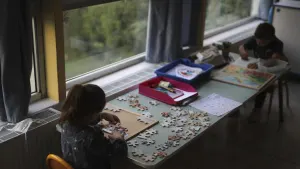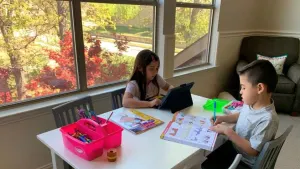More Stories
Staying physically active is one of the best ways to keep your mind and body healthy. In many areas, people can visit parks, trails, and open spaces as a way to relieve stress, get some fresh air, and stay active.
While parks and recreational facilities can offer health benefits, it is important to follow some steps to protect yourself and others from COVID-19.
The Centers for Disease Control and Prevention released its seven do’s and don’ts for visiting these areas:
1. Visit parks that are close to your home:
Traveling long distances to visit a park may contribute to the spread of COVID-19. Travel may require you to stop along the way or be in close contact with others with whom you may not otherwise have contact. Travel may also expose you to surfaces contaminated with SARS-CoV-2, the virus that causes COVID-19.
2. Check with the park or recreation area in advance to prepare safely:
National, State, or local parks:
The federal or state and local authorities will decide whether parks and other recreational facilities will open. Check with the park in advance to be sure you know which areas or services are open, such as visitors’ centers, bathroom facilities, and concessions, and bring what you need with you, such as hand sanitizer or other supplies to maintain proper hygiene.
The federal or state and local authorities will decide whether parks and other recreational facilities will open. Check with the park in advance to be sure you know which areas or services are open, such as visitors’ centers, bathroom facilities, and concessions, and bring what you need with you, such as hand sanitizer or other supplies to maintain proper hygiene.
Beaches or other swimming areas:
State and local authorities will decide whether swim areas at oceans, lakes, and other natural bodies of water will be open. Please check with individual beaches for specific details, including whether the water is open for swimming.
State and local authorities will decide whether swim areas at oceans, lakes, and other natural bodies of water will be open. Please check with individual beaches for specific details, including whether the water is open for swimming.
3. Stay at least 6 feet away from people you don’t live with and take other steps to prevent COVID-19:
When visiting parks, beaches, or recreational facilities open for public use, try to protect against exposure to SARS-CoV-2, the virus that causes COVID-19, by practicing social distancing and everyday steps such as washing hands often and covering coughs and sneezes.
Follow these actions when visiting a park, beach, or recreational facility:
Stay at least 6 feet from others at all times. This might make some open areas, trails, and paths better to use than others. Do not go into a crowded area.
Avoid gathering with people you don’t live with.
Wear a cloth face covering as feasible. Face coverings are most essential in times when social distancing is difficult. Cloth face coverings should not be placed on young children under age 2, anyone who has trouble breathing, or is unconscious, can’t move, or otherwise unable to remove the mask without assistance.
Wash hands often with soap and water for at least 20 seconds, especially after going to the bathroom, before eating, and after blowing your nose, coughing, or sneezing.
Adults and older children who can safely use hand sanitizer - use hand sanitizer that contains at least 60% alcohol and rub hands together until dry, if soap and water are not readily available.
4. Carefully consider use of playgrounds, and help children follow guidelines:
In communities where there is ongoing spread of COVID-19, playgrounds can be hard to keep safe because:
They are often crowded and could make social distancing difficult;
They are often crowded and could make social distancing difficult;
It can be difficult to keep surfaces clean and disinfected;
The virus can spread when young children touch contaminated objects, and then touch their eyes, nose, or mouth.
If you choose to visit a playground:
Maintain a distance of at least 6 feet away from people you don’t live with.
Maintain a distance of at least 6 feet away from people you don’t live with.
Wash hands with soap and water for at least 20 seconds.
Adults and older children who can safely use hand sanitizer - use hand sanitizer that contains at least 60% alcohol and rub hands together until dry, if soap and water are not readily available.
Wear a cloth face covering, if you can. Cloth face coverings should not be placed on children under age 2, anyone who has trouble breathing, anyone who is unconscious, can’t move, or is otherwise unable to remove the cloth face covering without assistance.
5. Play it safe around and in swimming pools, hot tubs, and water playgrounds, and keep space between yourself and others:
Evidence suggests that COVID-19 cannot be spread to humans through most recreational water. Additionally, proper operation of these aquatic venues and disinfection of the water (with chlorine or bromine) should inactivate SARS-CoV-2, the virus that causes COVID-19.
Swimming and other water-related activities are excellent ways to get the physical activity needed for a healthy life. Taking steps to reduce the spread of COVID-19 is one way you can play it safe in and around swimming pools, hot tubs, and water playgrounds.
Don’t visit a swimming pool if you are sick with, tested positive for, or were recently exposed to COVID-19.
Practice social distancing by staying at least 6 feet (two meters) from people you don’t live with.
Keep your hands clean by washing hands with soap and water, especially after going to the bathroom, before eating, and after blowing your nose, coughing, or sneezing.
Adults and older children who can safely use hand sanitizer - use hand sanitizer that contains at least 60% alcohol and rub hands together until dry, if soap and water are not readily available.
6. Don't visit parks if you are sick with, tested positive for COVID-19, or were recently (within 14 days) exposed to COVID-19:
If you are sick with or tested positive for COVID-19, were recently exposed (within 14 days) to someone with COVID-19, or just don’t feel well, do not visit public areas including parks or recreational facilities. Follow recommended steps to take if you are sick.
7. Don't visit crowded parks:
Do not visit parks where you cannot stay at least 6 feet away from people you don’t live with.
In general, the CDC says, the more closely you interact with others and the longer that interaction, the higher the risk of COVID-19 spread. Read about the 15 questions to ask yourself before venturing out during the COVID-19 pandemic here.
More from News 12
1:48

Mobile vaccine van parks at Brooklyn Borough Hall
0:23

New Excelsior Pass Plus app extends beyond New York jurisdiction

Your Coronavirus 2020 Photos

10 online learning tools for students to use at home
11:21:40

6 tips for home schooling children and remote learning
